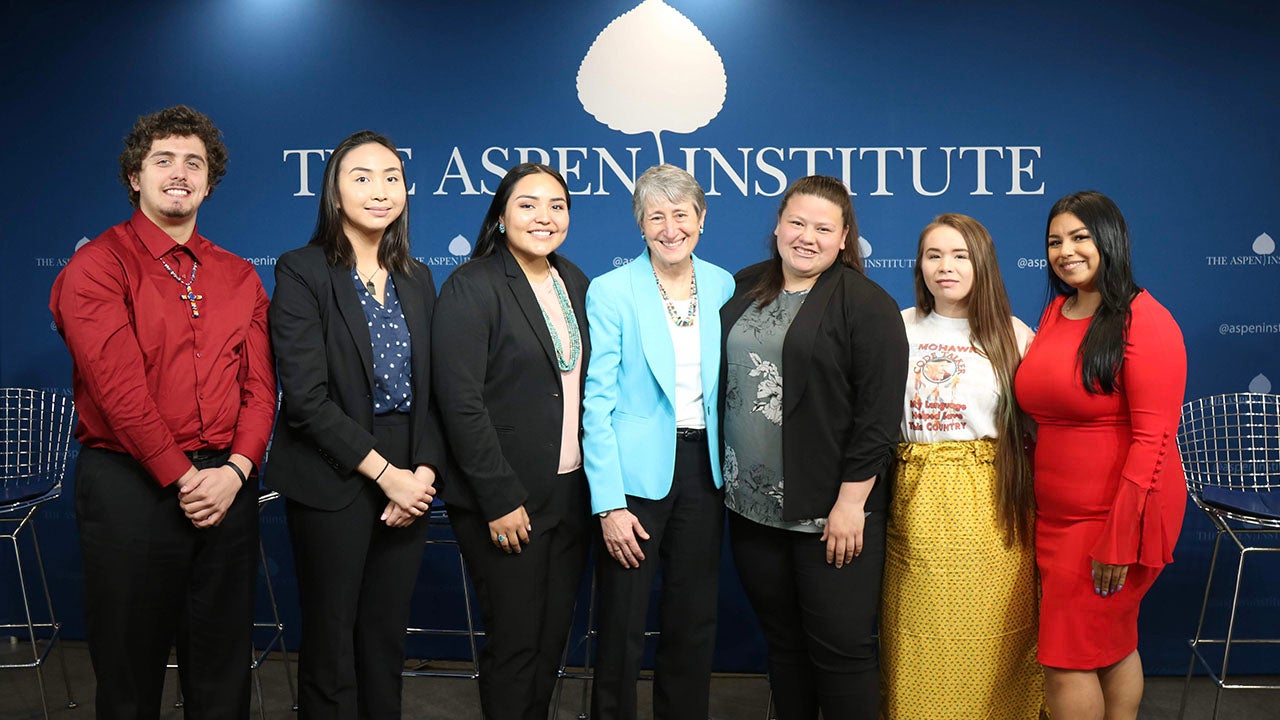Every November, friends and colleagues always ask me for recommendations to learn more about our communities during Native American Heritage month. While I never have a shortage of recommendations, one piece really stood out to me this year: Uprooted: the 1950’s Plan to Erase Indian Country. Produced and written by Max Nesterak for APM Reports, this incredibly well-researched podcast shares an important part of American history—a history I grew up hearing about first-hand in my family.
My great grandfather, George Jefferson Raymond, was removed from his Nakoda community in Canada near the turn of the 20th century and forced to attend a boarding school, part of a system designed to assimilate Native children and discipline them for practicing their culture and speaking their language. He eventually ran away to Chicago where he started his family. My grandfather, George Jerome Raymond, became one of the first American Indian dentists after he returned from service in World War II. He graduated dentistry school and began practicing during the 1950s on the Blackfeet and Fond du Lac reservations. Resources were incredibly scarce, and scraping together what he needed to provide basic dental care for tribal citizens was a daily struggle. It wasn’t until I was older that I began to understand that my grandfather was trying to serve Native people during a dark and seemingly hopeless time for them after World War II. The 1950s was a period of aggressive and harmful policies directly aimed at dismantling culture, breaking up families, assimilating Native people into Western white culture—and eventually erasing tribes.
Explained through the voices of Native people themselves, Uprooted sheds a much-needed light on how the policies of the 1950s continue to impact our communities today. Within a decade, the federal government had “terminated” its government-to-government relationship with more than 100 tribes, turning its back on legal obligations to provide for the health, education, and welfare of Native people. It also resulted in the removal of over 2.5 million acres of land held in trust by the government for tribes, much of it sold off to non-Native people. Our ancestors fought and gave their lives to defend this land, and then signed treaties, many times under duress; the federal government simply chose not to honor them.
Today, the majority of Native people live outside a reservation in urban areas — another direct legacy of the policies of the 1950s. As the federal government tried to rid itself of reservations and treaty responsibilities, it also encouraged thousands of Native people to move to urban areas through the Indian Relocation Act. In the rapidly expanding industrial economy after World War II, Native people were promised job opportunity, housing assistance, and income assistance to move to major metro centers. In reality, this promise was an expedient and disingenuous effort to assimilate as many Native people as possible into Western, white, urban culture. Most Native people ended up socially isolated in low-paying jobs with little connection to their culture, lifeways, and social supports of the reservation. Today, urban American Indians and Alaska Natives face a poverty rate of over 20 percent. Native children were also aggressively adopted out through child welfare agencies during this period; 25-35 percent of Native children were removed from their families and 85 percent were placed outside Native communities.
Even facing these dire policies and broken promises, Native people fought back. Uprooted tells the story with a focus on the voice of Native people, their resilience, and resistance. Thanks to grassroots movements like American Indian Movement (AIM), many led by Native youth, the termination and relocation policies ended and were replaced by critical policies like the Indian Self-Determination Act and the Indian Child Welfare Act, which refocused policy on tribal control and not assimilation. While some tribes were successful at regaining recognition, many are still fighting to restore their trust lands and treaty responsibilities.
Today, I have the honor of leading a center here at the Aspen Institute focused exclusively on leadership development and advocacy for Native American youth from urban and reservation communities across the country. It’s a privilege to do what we can to support their movements, amplify their voice, and learn from their innovation. Every day, I see Native youth leaders across the country who are undertaking powerful community initiatives to rebuild their language and culture, restore their traditions and lifeways, protect their lands and sacred sites, and showcase the resilience of their communities. For generations, we have resisted the policies designed to destroy and erase us. Today, I see our young leaders helping our communities heal from what you will learn about in this podcast and lead us toward a bright future — one built on the strength of our cultures, not their destruction.
Erik Stegman, Carry the Kettle First Nation (Nakoda), is the Executive Director of the Center for Native American Youth.


